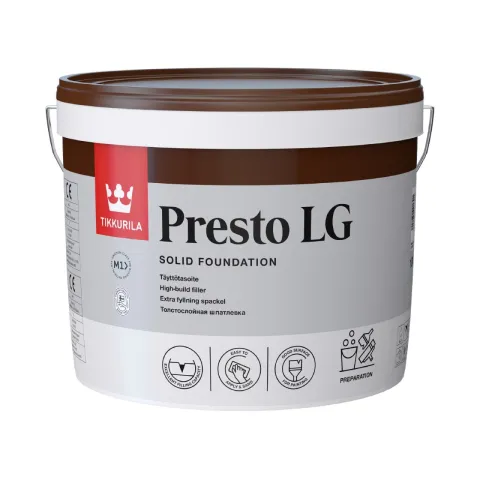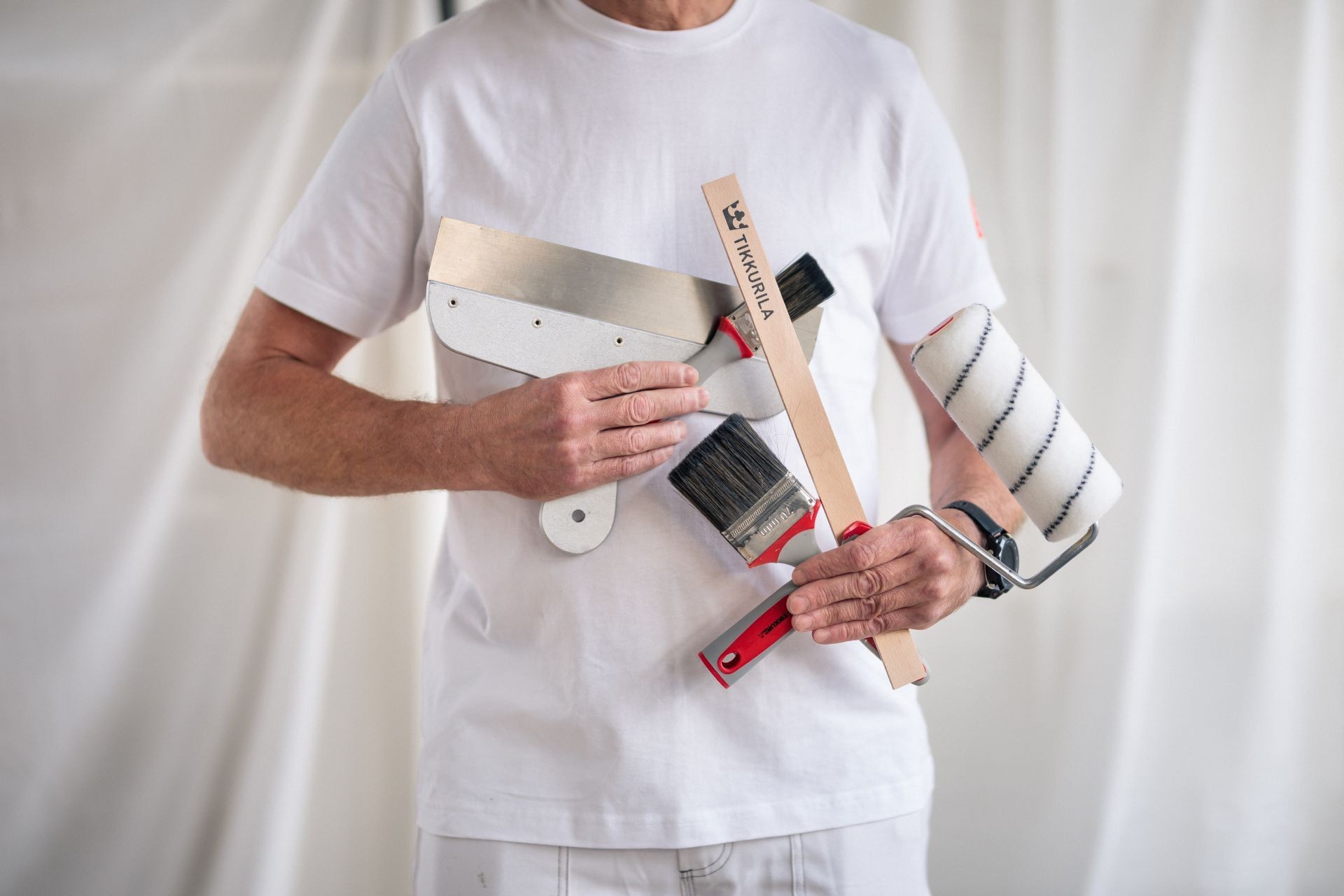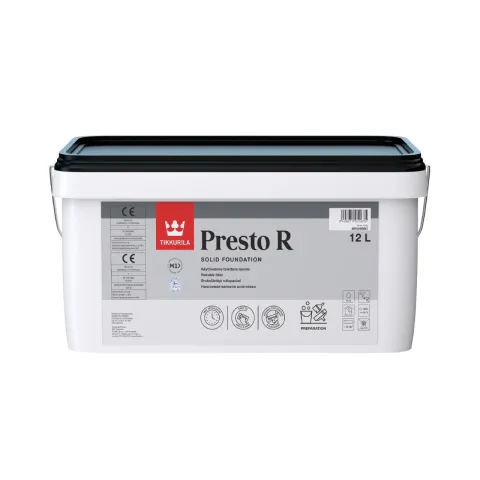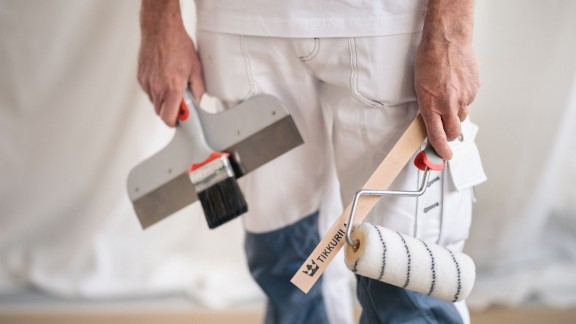
Presto LG
Filler
A smooth surface is essential for successful painting. Learn what are the eight basic mistakes to avoid when levelling.

Before you start, you have to know what you're dealing with: previously painted surfaces, gypsum board, wood fibre board, chipboard, smooth concrete, plaster surface or something else? Are there any loose layers that have to be removed? The surface material and its condition determine the type of filler and primer you need for the job – failing to check the surfaces may result in poor adhesion, among other problems.
Always check the properties of the product and stick to the instructions. If the product data-sheet says 3 mm, don't use more, as it will take forever to dry. There is a variety of fillers to choose from, ranging from 3 mm filling capacity (Presto R Roll-on Filler / local example) to up to 30 mm (Presto LG Coarse Filler / local example) filling capacity. It all depends on how thick layers you need: when applying more than 3 mm, the product must have good filling abilities – otherwise, you'll have to repeat the job. Filler coat thickness must not exceed its filling ability.
Water-borne, ready-to-use light filler for roller application. Filling capacity 3 mm without cracking and good adhesion on various substrates.

Water-borne, ready to use high build filler. Filling ability 0-30 mm without cracking. Minimal shrinkage and good adhesion.

For walls without significant defects, filler consumption is roughly 1 l/m2, which applies for most Tikkurila products. Increasing the thickness of the layer requires a proportional increase in consumption. Calculating errors delay the completion of the repair.
It makes a difference if you're painting a dry room or a wet room. Basements, for example, have a lot of moisture, and they need a deep-penetrating primer to seal the surfaces. There are special products for filling gypsum board, concrete and plaster surfaces in humid interior premises, such as bathrooms, so make sure to choose the right product for walls in humid places.

Using the right tools makes the application much easier and saves you precious time. If you're working on bigger surfaces at a large construction site, you need a sprayer (airless or air-assisted) for applying filler to be able to cover hundreds of square metres per day – manually this is impossible.
If you're working on a small site, one wall for example, you need a smoothing trowel. Here, size matters: a 20 cm tool is good for minor work, but not the the whole wall. Always consider the size of the job and product specifications, and choose your tools accordingly.
When sanding, it is important to choose the right sandpaper – always check product specifications. If the sanding paper is too coarse, there will be scratches on the filler. If the sanding paper is too fine, it will take a lot of time and effort to get the proper result. As a general rule, sandpaper grit 120–180 is good for sanding wall filler.

It is critical to remove all sanding residue before painting – sanding dust left on surfaces result in bubbles, which in turn may cause the paint to peel off. Remove the dust from the surface with a soft brush and pay close attention to corners, as they are normally the place that gather the most dust. Using a sander with a vacuum attachment makes the job easier.
It is important to have a good understanding of client expectations and quality standards before starting the job. Surfaces that are critically positioned in regards to light, require special attention to filler and levelling, as paint doesn't hide any errors. Also, if the top coat is high-gloss, it will show all the defects of the surface: the final layer has to be free of any scratches or sanding marks. On the other hand, if you are working on fire escapes or corridors with no natural light, it is less important to have a polished appearance.
You’re visiting Tikkurila website from United Kingdom. Would you like to visit the local UK site?